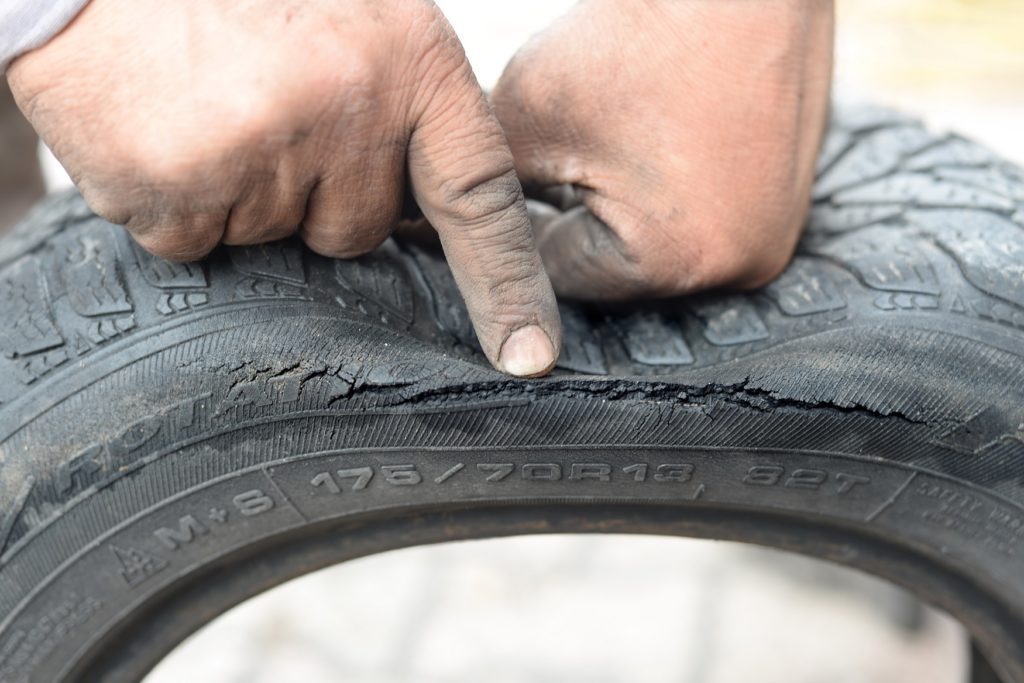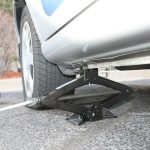Our reader was washing their car and noticed what looked like cracks in the sidewall of their tyre. They want to know whether cracked tyres is something they should worry about.
How big are the cracks?
Tiny cracks that appear in the tread blocks aren’t anything to worry about. Our reader’s cracks were deeper and longer and featured in the tyre’s side. In this case, it’s a sign that the tyres are coming to the end of their life.
What do cracked tyres mean?
As tyres age, the chemicals in them start to age too. It’s a bit like they dry out. Deep tyre cracks are a sign that the sidewall and/or tread are starting to separate from the body of the tyre.
It’s worth saying that cracks in tyres can be a particular problem in caravans and motorhomes, for reasons we’ll explain below.
Are cracked tyres illegal?
Cracks in the sidewall can mean that moisture is getting into the tyre’s structure. Beneath the rubber of tyres is a mesh of steel wires. These cords give the tyres their strength and stiffness. If water gets into these it can cause corrosion which eventually causes the cords to fail. The result? Tyre blowout where the tyre suddenly fails. But surprisingly, cracked tyres aren’t actually illegal.

What leads to tyre cracks?
Tyres have anti-ageing chemicals in them. These are distributed around the tyre when they’re driven on. The older a tyre gets, the less effective these chemicals become. This results in the outside of the tyre becoming more brittle, which ends up with cracks appearing.
Being stationary can also result in cracked tyres because if they aren’t moving they aren’t having their anti-ageing chemicals distributed around them. Cars that spent a lot of time standing idle during the COVID pandemic are among those likely to suffer from cracked tyres according to this Guardian article.
The sun shining on them causes problems too. The tyre absorbs the UV rays in sunlight. This does two things: it causes the tyres to heat up meaning they expand and contract. And the UV rays cause the tyre’s compound to degrade. The result of both these things is cracked tyres.
What can you do about cracked tyres?
Unfortunately, once cracks appear in tyres, it’s too late to do anything about them. You should replace the tyres with cracks in and then try to prevent them forming in the first place. If you have a caravan or motorhome, when it’s laid up over winter, try to protect the tyres from sunlight by covering them. And if you can, rotate the wheels on a monthly basis.
Also, check the age of your tyres. The older they are the more likely they are to have cracks in them. You will find the age on the sidewall. It’s in an embossed box and features four digits which signify the week and the year tyres were built.
Will cracked tyres fail the MOT?
Cracked tyres are one of those weird ones where it’s not actually illegal to have cracked tyres on your car. But if you take your motor for its MOT, it will fail the test if it does have cracks in the tyres.
This is because the MOT is a safety test above everything. Cracks mean the structure of the tyre has been compromised and it could fail at any moment, putting you, your passengers and other road users at risk.
Is it safe to drive with cracked tyres?
If you see cracks in your car’s tyres, you should get them replaced promptly. As mentioned above, the cracks mean that water can get into the tyre and cause structural problems. These can cause the tyre to fail suddenly or tyre blowout.
Why are cracks in tyre treads different to cracks in sidewalls?
The pressures on a tyre’s sidewalls are very different to their tread. For a start, a tyre wall is constantly flexing. It’s bearing the weight of the car and as you drive along it flexes to a greater or lesser degree with every rotation of the wheel. This is further exacerbated if the tyre pressure isn’t what it should be in underinflated tyres.
The tread doesn’t flex in the same way. And because the treaded area is much thicker than the sidewall, if it does get cracks in it, it’s much less likely that those cracks will cause structural problems with the tyre. Water will simply get in and then be squeezed out again without doing any damage or contacting any of the tyre’s metal components.

I’ve been writing about cars and motoring for more than 25 years. My career started on a long-departed classic car weekly magazine called AutoClassic. I’ve since pitched up at Autosport, Auto Express, the News of the World, Sunday Times and most recently the Daily Telegraph. When I’m not writing about cars and motoring, I’m probably doing some kind of sport or working in my garden.







